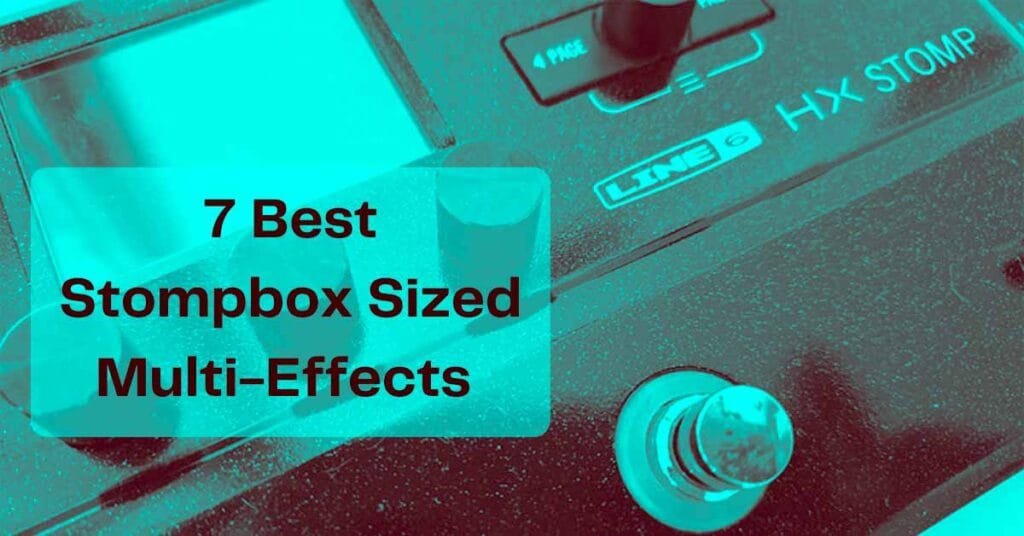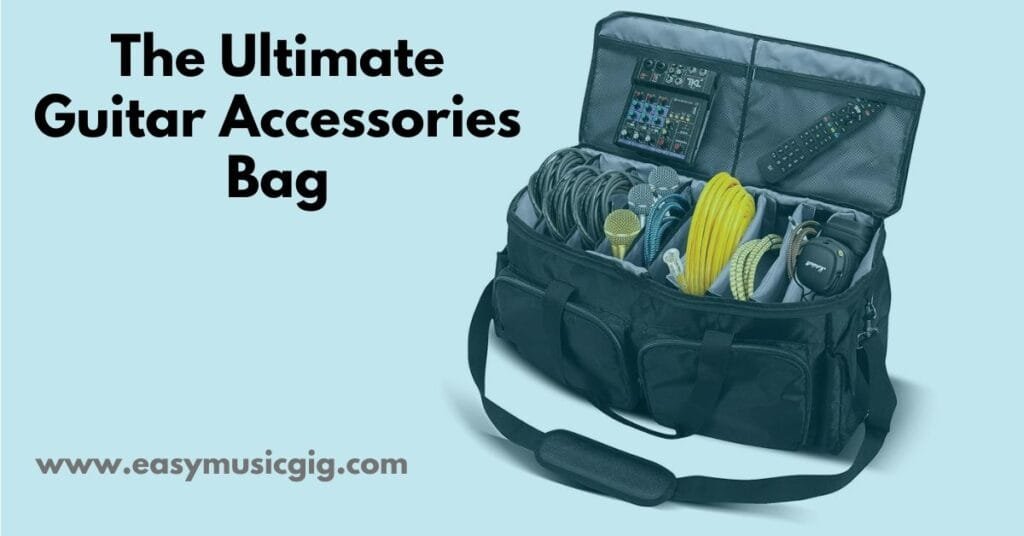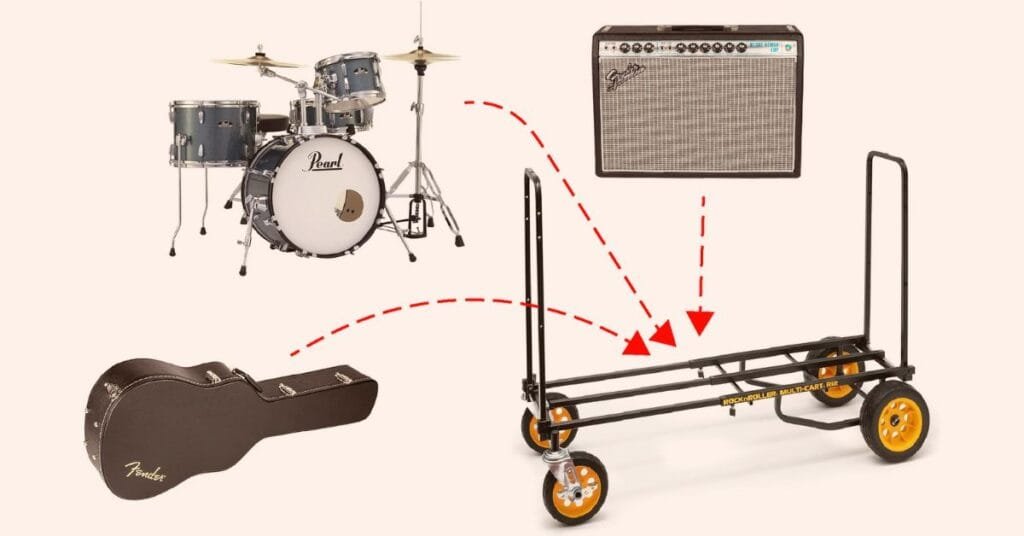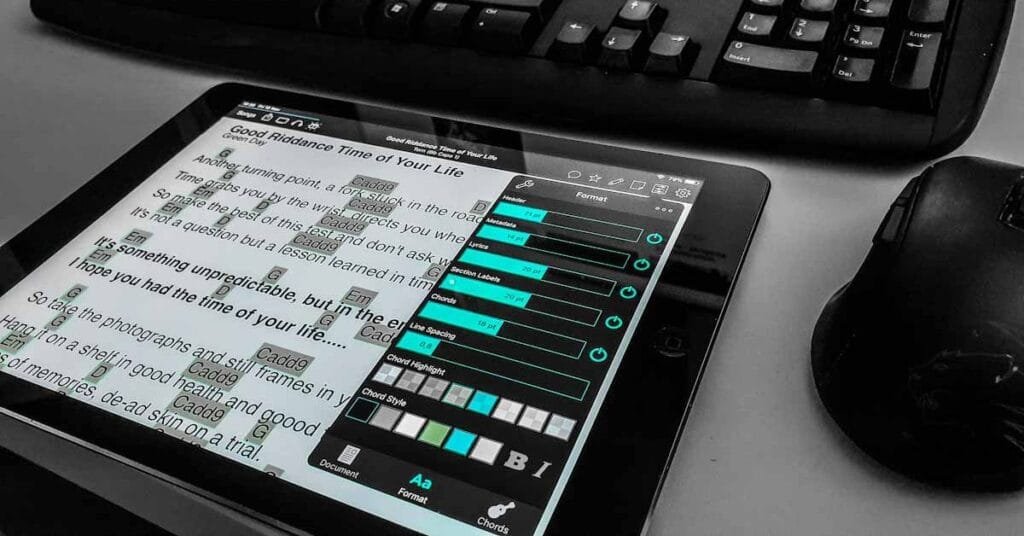7 Best Stompbox Sized Multi-Effects
Pedal Addiction
Sooner or later some guitarists will try to minimize their gear. What many of them do is replace a 2 x 12” speaker cabinet with a single 12” one. Some decide not to take 3 guitars to the gig but only 2. One of the last things they try to downsize is their 30lb pedalboard that has a matching enormous flight case for a small guitar multi-effects.
This type of pedal rig is not necessary if you are playing small gigs frequently. Why not have only one unit instead of 20 pedals in a way too heavy case? Today I have a small lightweight case with the smallest one-row pedaltrain type pedalboard with just one compact-sized multi-effects pedal AND two small pedals for my vocals. And I still have room for one more small pedal if needed. My tone is consistent night after night and I don’t have to break my back.
I used to have 2 different reverb pedals in my pedalboard for, uh, different reverbs. The Boss RV-6 for plate and the Topanga from Catalinbread with awesome spring reverb for playing surf classics. At one point I bought a small 10” cabinet with a slightly darker tone than the previous 12” tube amp I used. Obviously, I then needed a decent EQ pedal. I needed something to smooth things out, so a compressor pedal was added. The list of pedals that you buy can easily go out of control. Effects pedals are the perfect toys for a middle-aged guitar player ‘cause they’re pretty, come in all kinds of colors, and produce some really awesome effects for guitar by the way.
After going through this list of the best small guitar multi-effects, you will see that it’s possible to have a custom pedalboard that’s not only compact in size but is also able to produce all the sounds and have all the flexibility features that you need.
All that is cool if you are 25, play a couple of gigs each month and/or, have roadies to carry and set everything up. But what if you play very often, at small venues like hotels, camping sites, pubs, and small clubs?
Who needs a compact guitar multi-effects pedal
- Players who gig a lot and do the setup and teardown by themselves
- Guitarists that usually use large pedalboards when playing in small sized venues
- Anyone who wants to avoid taking their whole rig to their rehearsals
- Every player that wants a small backup rig
- Guitarists who want to add a pedal with new effects for their existing pedalboard or as a backup for individual pedals that don’t work
Digital vs Analog
Until a few years ago, lots of guitar players would agree that multi-effects units cannot match the sonic features and qualities of good old analog pedals connected and controlled by a footswitch.
Times have changed and digital technology is making the gap between the sound quality of analog and digital smaller and smaller. The truth is the difference is almost undetectable when you play small venues. Most of the time when you play at hotels for instance, you have to be aware that the guests aren’t there because your band is playing, you’re more like a sideshow to them, entertainment that the hotel is providing. The very slight difference of tone between analog and digital even for us musicians is a much smaller issue than the lifting of a way too heavy rig.
Are multi-effects pedals worth it?
Multi-effects technology is getting more advanced by the day, making them sound better and smaller. Deciding to go the digital route after years and years of playing warm analog pedals is not easy. This decision simply results from weighing the pros and cons of analog and digital technology. Since we are aiming at smaller and lighter gear here at Easy Music Gig, digital is the overall winner.
Main reasons to consider digital multi-effects:
- Size and portability: They are compact and lightweight making them the most convenient choice for musicians who play frequently
- Presets and memory: allows you to switch between different sounds with a single click
- Versatility: Digital pedals offer a wide range of effects, amp modeling, Impulse response (IR), and MIDI features, which is not possible with analog units
- Signal chain placement: Ability to order effects in any way
List of best stompbox-sized multi-effects
Now that we’ve decided that we need a digital multi-effects unit, let us take a look at some of the best small guitar multi-effects on the market. They can get the job done, and they do it very well.
1. Line 6 HX Stomp

Line 6 HX Stomp
Complete guitar rig in pedal format
Main Features:
Review
HX Stomp is a stompbox multi-effects pedal. It is an amp modeler. You can use it as an audio interface. Does it take IRs? Yes! It’s a complete guitar AND bass rig that looks and sounds even better. Organize your effects order in any way, and split the signal to route to your amp and the FOH at any point in the signal chain. With MIDI in and out, tap control, a built-in looper, and a tuner that looks great on a dark stage the Line 6 HX Stomp reveals the truth to us – Every player should have one.
The little Helix
All this sounds like something the full-sized Line 6 Helix can do. In terms of quality and versatility, they’re not much different. The main differences are only in the number of blocks that can be used simultaneously, the number of presets, footswitches, and size and weight. The number of effects, amp, cabs, as well as their quality is the same.
The Line 6 HX Stomp can use up to 8 blocks at once. A block counts for effects, amps, and cabs. So if you need an amp and cab simulator, you still get to use 6 more effects, which depends on DSP capacity but is still more than enough for most of us playing gigs frequently. The screen is smaller than the one on its big brother, the Line 6 Helix Foor but that shouldn’t be a problem, you just have to create all your sounds and tweak them at home. The learning curve is a bit steeper also but you will be rewarded with a very small unit capable of doing everything you need.
The 3 footswitches can do a lot. When pressing the middle footswitch together with the left or right one you get additional functioning. When adding an additional small 2-footswitch pedal like the HoTone FS-1 Ampero Switch to the TRS footswitch input located in the back of the device you get two more assignable footswitches. That combo makes the HX Stomp grow into a much more controllable and easy-to-use guitar multi-effects pedal.
For live performances, the HX Stomp can be used for multiple purposes:
Pros
Cons
2. Eventide H90

Eventide H90
Two Algorithm heavens in one pedal
Main Features:
Review
Before diving into what the Eventide H90 can do, some explaining is necessary. The Eventide multi-effects family is not your classic multi-effects unit. A normal multi-effects pedal has the possibility of running a certain number of simultaneous effects. You get to choose which ones and then by changing the parameters of those effects, their order, and routing, you can save all of that information as a program, preset, or whatever it is called. Eventide doesn’t work that way, they have predesigned algorithms. Some use 2 effects, some use more at once depending on the specifics of the algorithm. The algorithms work as complete sounds which you can tweak to your tastings.
Eventide’s H90 Harmonizer redefines the possibilities of a multi-effects pedal. It combines the studio-level versatility of the flagship H9000 unit with the smaller H9 pedal. H90 is something like having two H9s in one pedal format. Having two H9s is something commonly seen on professional pedalboards. The H9 runs one of 52 algorithms at a time, while the Eventide H90 adds ten more all-new algorithms for even more versatility. It also has an expanded control set compared to the H9’s single-knob setup.
The input/output configuration options are impressive, including MIDI in/out/thru, USB functionality, and two expression pedal inputs. The high-resolution OLED display is designed for instant adjustments without having to enter deeper editing options.
This pedal does not have amp/cab simulation possibilities like some of the other pedals in this list, but that is in no way a minus factor. The quality of the sounds from Eventide comes from the rack unit, the H9000 which is a legendary rack device that costs about ten times the price of the pedal versions.
Pros:
Cons:
3. Hotone Ampero Mini

Hotone Ampero Mini
The new downsized version of the HoTone Ampero
Main Features:
The HoTone Ampero mini is the smallest and youngest member of the Ampero family. Two DSP chips are at the heart of this little pedal that works as a multi-effects unit, amp and cab simulator, audio interface, looper, IR loader, and drum machine. The thing that catches attention is the “pure touch operation” 4″ touch screen which can detect scrolls when dragging your finger across the screen.
The pedal comes in six available colors: Vanilla, Orange, Marigold, Purple Taro, Matcha, and Mustard which is a nice touch for the color lovers out there. It even comes with a USB-C output for transforming the pedal into an audio interface. With Hotone’s Windows/Mac editing software, effects, and IR management are easily done on the big screen.
What you get with this pedal for the price is amazing. Two DSPs and the 9 simultaneous effects combined with the price, are a win-win product for someone on a small budget with a simple operating multi-effects pedal in mind. For someone looking for a device with a bit more flexibility, the HoTone Ampero II Stomp could be a better choice.
Pros:
Cons:
4. Hotone Ampero II Stomp

Hotone Ampero II Stomp
Line 6 HX Stomp’s budget rival?
Main Features:
OK, so the HoTone Ampero II Stomp is like a slightly bigger brother to the Ampero Mini and like a same-sized brother to the Line 6 HX Stomp. Many users agree that the HX Stomp is better for live use compared to the HoTone Ampero II Stomp. But still, HoTone has more block options and has a cool 4.3″ TFT touchscreen.
If you are looking for a multi-effects and amp simulator pedal for live gigging with features similar to the HX Stomp but for less money, the HoTone Ampero II Stomp could be the “stomp” for you.
Pros:
Cons:
5. Zoom MS-50G

Zoom MultiStomp MS-50G
Complete guitar rig in single-pedal format
Main Features:
The Zoom MS-50G is certainly the smallest unit on this list. Days when Cheap multi-effects meant cheap sound are gone. It’s amazing what Zoom managed to pack into this small pedal. 100 guitar effects and amp models including modulation, equalization, delay, and reverb are available for 50 memory customs patch slots. There are 30 preset patches that you can trim to your likes. The onboard chromatic tuner that supports all standard guitar tunings, including open and drop tunings is certainly a plus. You might be surprised that there is even a tap tempo for synchronization of delay times or modulation rates.
On the right side is a ¼” input jack for both active and passive instruments. Zoom made it possible to run the device with 2AA batteries, a 9V adapter, AND via USB. The USB input makes it possible to take your Zoom to remote busking locations. Zoom’s own StompShare app for Mac and Windows will make dialing in and saving your presets much easier. To wrap things up the whole thing comes in a solid metal chassis.
Pros
Cons:
6. Boss GT-1000 Core

Boss GT-1000 Core
Advanced guitar rig in pedal format
Main Features:
Since 1977, BOSS has been making innovative pedals, amplifiers, multi-effects processors, and loopers. Their expertise in this field of effects has led to the BOSS GT-100Core which delivers the most complete guitar and bass processing in a single stompbox. 24 simultaneous effects blocks are something other brands haven’t even come near to. The dual FX loop feature is not seen in other similar units. It has 3 large assignable footswitches very similar to the HX Stomp but the 5 parameter knobs really stand out.
AIRD (Augmented Impulse Response Dynamics) technology delivers a natural feel. AIRD is the next step of the Tube Logic concept behind the Katana, Waza, and Blues Cube amplifiers. You get all the classic BOSS effects, all the vintage stomps, and all the algorithms from the DD-500, MD-500, and RV-500 pedals. 250 user patches are available to store every sound you will ever need for every type of gig. The DSP engine is impressive and it delivers enough power so you won’t be running out of processing power.
GT-1000CORE is a bass processing powerhouse in an all-in-one package. It has three AIRD bass preamps for shaping your tone, and eight overdrive/distortion effects for additional coloring. Other specially tuned effects for bass include chorus, flanger, touch wah, MDP bass compressor, and many more. The BOSS GT1000CORE uses 32-bit/96kHz processing, while their competitors mostly use 24-bit 96kHz processing.
Pros:
Cons:
7. Nocturne Mystery Brain BS-301

Nocturne Mystery Brain BS-301
The ultimate rockabilly “all-in-one” pedal
Main Features:
The Mystery Brain BS-301 by Nocturne is not a multi-effects unit, period. We are listing small multi-effects pedals so you can minimize your guitar or bass rig and make life easier when gigging. This pedal exactly matches that purpose. It makes gigging easier for rockabilly guitarists! Blues, surf, honky-tonk, roots-rock, and retro-style guitar aficionados will also love this pedal. This pedal is made by The Nocturne Brain which is a family-owned boutique pedal company from San Diego owned by Tavo Vega.
The main features of this pedal are:
The pedal starts out with the classic 301 analog Japanese preamp that is based on the vintage Roland Space echo RE-301 tape echo unit that became very popular after Brian Setzer started using it. The Abby mode footswitch provides a light overdrive boost, while the digi tape echo gives us a warm slapback echo combined with chorus and tremolo.
100% analog vintage tone, texture and dynamic replication of the 70’s Japanese RE-301 Space echo PREAMP w a boost mode, AND a digi Tape echo sim using analog photocell modulation for chorus or vibrato in the slapback.
Pros
Cons:
Conclusion
Whether you are a guitar/bass player looking for the lightest possible pedal rig or a player who just wants to ease up things when going to rehearsals, this list has some of the best small guitar multi-effects available. Are you trying to convert to a non-amp player? Even if you are not looking for a stompbox-sized multi-effects pedals for your regular gigs, having one in case something goes wrong with your expensive custom pedalboard will save your show. Small guitar multi-effects are a perfect match for a modern modular pedalboard. What does your pedalboard look like?



